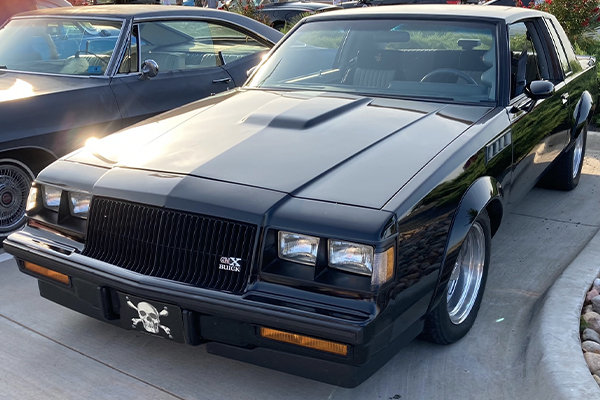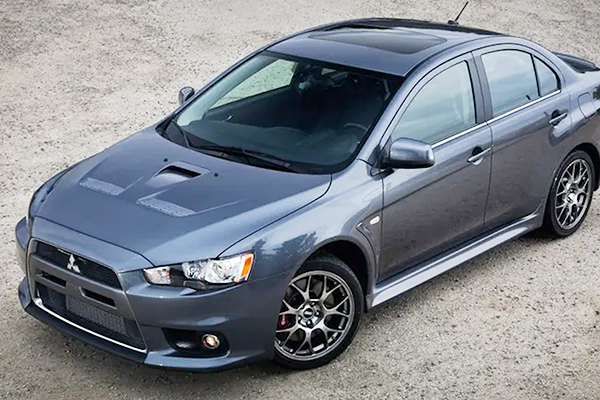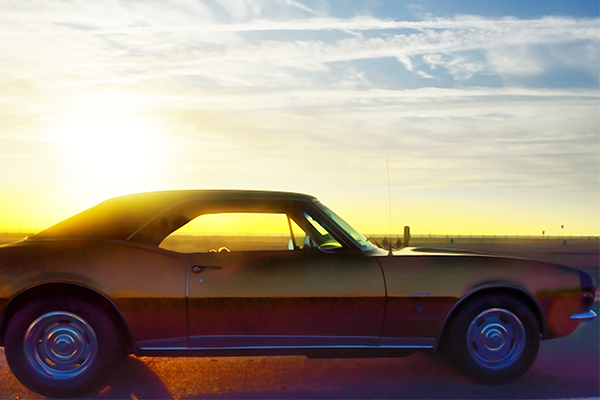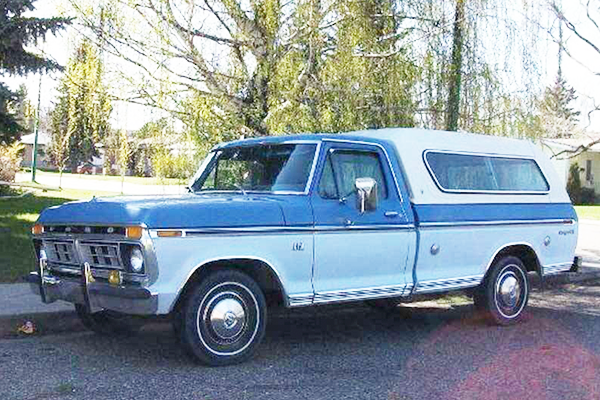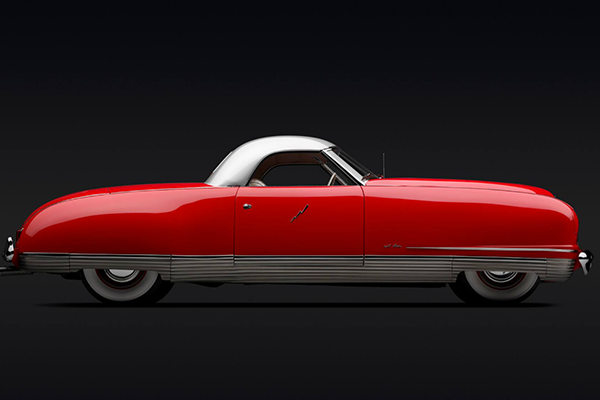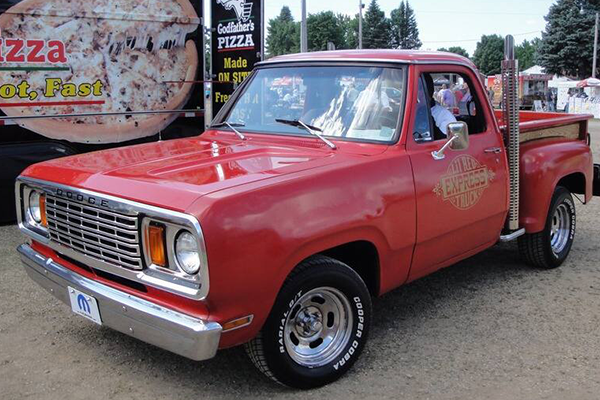From timeless icons to everyday essentials, Crucial Cars examines the vehicles we can’t live without. In this installment, we put the spotlight on a sporty American subcompact – the Ford Fiesta

2011 Ford Fiesta, Source | Ford
Introduced for the 1977 model year, the Ford Fiesta brought European flair to the humdrum American small car marketplace. Unlike the clumsy, poorly built Vegas, Pintos, and Gremlins of the day, the Fiesta was light, agile and better on gas to boot. But although the Fiesta is now in its sixth generation, the U.S. has only received the first and latest versions of this subcompact. But that’s fine with us, as the newest Fiesta, with its solid build quality and very likeable, fun to drive personality is so good that we’re almost tempted to chant “U.S.A., U.S.A., U.S.A.” whenever we drive one.
From Germany with love

1979 Ford Fiesta
The first Fiesta to hit U.S. Ford dealers arrived for 1977. Built in Cologne, Germany, ain, the Mark I Fiesta was truly tiny compared to American made small cars. Indeed, with an overall length of 140 inches, this two-door hatchback was nearly two feet shorter in length than a Ford Pinto (163 inches). Power came from a 1.6-liter inline four that made an earth-shaking 66 horsepower. Still, that was enough to move the lightweight (1,800-pound) Fiesta along adequately in city traffic and on the open highway while delivering close to 40 mpg.
Available in the U.S. through 1980, these first-gen Fiestas were typically offered in four trim levels: base, Décor, Sport, and Ghia, with increasing standard features culminating in the Ghia with its fancier exterior trim accents and plush cloth upholstery. With the Escort replacing the Fiesta (and Pinto) for 1981, the Euro-flavored little Ford took the next 30 years off from the U.S. market. But it would return later with a vengeance.
Second generation: 1983-1989

1983 Ford Fiesta
The Fiesta Mark II came on to the scene in August of 1983 with a modified front end and interior, as well as an added decorative molding on the sides. It also had a vastly different dashboard on the lower-series trim levels. In 1984 the 1.3 L OHV engine was replaced by a CVH with similar power, then replaced again with the lean-burn, 1.4 L two years later. The 957 and 117 cc engines, Kent/Valencia, were continued with minimal changes, but a diesel Fiesta was produced for the first time in 1986 using a 1,600 cc engine like in the Ford Escort. The Mark II Fiesta featured models including Popular, Popular Plus, L, Ghia, 1.4S, and the XR2.
The XR2 was the completely updated version of the Mark II with a much larger body kit, 96 bhp, 1.6 L CVH engine, and five-speed gearbox. In 1986, the engine was replaced by a lean-burn variant featuring a revised cylinder head and carburetor. While much better for the environment, this version was less powerful. Despite this loss of power, this facelifted Fiesta was a top seller in the UK. In 1987, its best year, more than 150,000 Fiestas were sold in the UK.
Fiesta Mark III: 1989-1997

1990 Ford Fiesta
In its third generation, the Fiesta Mark II, codenamed BE-13, was unveiled at the end of 1988 and went on sale in February ’89. Replacing the car’s rear beam axle for a semi-independent torsion bean arrangement, the car was based on a new platform and looked completely different than its predecessors. The CVH engine units were pretty much unmodified, however, the diesel engine was enlarged to a 1.8 L.
In august 1989, the sport model XR2i was launched. This eight-valve CVH engine pumped out 104 PS and was the first Fiesta to have a fuel-injected engine. In 1992 it was replaced by a Zetec 16-valve version and the CVH engine was being phased out. From 1995 to its demise in 1997, Ford marketed this third gen, revised trim level Fiesta as the “Fiesta Classic” as it was run in production with the new Mark IV.
Mark IV: 1995-2002

1999 Ford Fiesta
As soon as it was launched in 1995, the Fiesta Mark IV become Britain’s best-selling car from 1996-1998. And this is no surprise thanks to the variable Zetec-SE engine including a 1.25 L and 1.4 L, as well as the 1.8 liter diesel. Outside of these performance changes, the styling of the interior and exterior were enhanced making it a winner in multiple countries, except sadly North American countries.
In 1999, the Fiesta saw a minor facelift in an attempt to give the vehicle a more modern look. With focus-inspired grill, bumpers, and wheel designs, this facelift became known as the Mark V. Under the hood you’d find a 1.6i 16V Zetec engine, new side airbags, and the reintroduction of leather trim.
Fifth gen: 2002-2007

2006 Ford Fiestas
If you couldn’t guess, the next gen Fiesta was known as the Mark V. This vehicle launched on April 1, 2002 using the same engines from the previous models, but rename Duratec since the Zetec engines were solely used in the sport models. The 1.3 L engine was short lived and replaced quickly with the Rocam 1.3 L, Duratec 8V. Trim levels available initially were Finesse, LX, Zetec and Ghia, with limited edition variants soon following. Engines available include 1.25 L, 1.3 L, 1.4 L, 1.6 L, 2.0 L petrol, plus 1.4 L 8v and 1.6 L 16v Duratorq TDCi common-rail diesels built in a joint venture with PSA.
This generation Fiesta was a generation of first with it being the first model to feature the anti-lock braking system and passenger side airbags, standard. It was also the first Fiesta to be sold in Asia and Austraila, replacing the Kia Festiva. In 2005, the car underwent minor asthetic changes. This Fiesta was sold in many countries around the world, many under different names including the Fiesta One Max, Fiesta Saloon, and the sport, performance model, the Fiesta ST/XR4.
2006 saw yet another series of improvements. The exterior changes included new bumpers and grille, new headlamps, new rear lamps, re-designed door mirrors and thicker body side moldings, with body colored handles, mirrors and side moldings on selected models. The new color palette was a welcomed change with colors like Tango Red, Amethyst, Sublime, and Apple available.
Inside this new look an upgraded ‘analogue’ instruments panel with a soft-feel upper section to the instrument panel. The revise also included a range of new technologies, including Voice Control, Bluetooth, trip computer, Electronic Automatic Temperature Control (EATC), rain-sensing wipers, automatic headlights, power-fold door mirrors, and MP3 connectivity.
All of these additions and rennovations pushed this generation Fiesta over the top and Ford saw a 25% increase in sales. In addition, the Mark V was voted Britain’s most popular supermini in both ’06 and ’07 for the first time since 2001. Various limited edition models were introduced towards the end of the generation offering Fiesta enthusiasts even more to drool over.
Sixth generation: 2008-now

2009 Ford Fiesta Hatchback
Finally back in the U.S. after a 30-year hiatus, the Fiesta Mark VI was shown as a concept called the Ford Verve at the Frankfurt Motor Show in 2007. It was marketed in the States as well as in European and Australia markets, Based on Ford’s new global B-car platform, this sixth gen Fiesta/Verve was introduced in three different concepts in different parts of the world, all intended to meet market demand for smaller, more fuel-efficient cars.
Verve 1
This Fiesta/Verve concept was a three-door hatchback featuring panoramic glass roof, pillar-less side glass, LED headlamps, high-mounted LED tail lamps, integrated tailgate spoiler and dark-chrome lower diffuser with integrated center exhaust outlet. Inside, you found leather in different shades along updated and modern multimedia equipment.
Verve 2
Based on the Frankfurt concept introduced in 2007, this vehicle was a four-door notchback finished in what Ford called their ‘frosted grape.’ The vehicle’s styling was similar to the first concept and also including all the modern technological advances.
Verve 3
A further four-door Verve concept car for North America was revealed at the North American International Auto Show in January 2008. It was finished in Rouge Red, featured a modified front fascia, solely used on this vehicle. A deeper upper grille, with Ford of North America’s trademark ‘three-bar’ graphic, and a downsized lower inverted trapezoidal grille were incorporated giving it a more unique look.
Back and all grown up

2011 Ford Fiesta sedan
For the 2011 model year, the Fiesta was back in fine, make that much finer form. Once again bred chiefly in Europe, but built in Mexico for the U.S. market, the modern-era Fiesta was so good at debut it had hardened car critics lavishing praise upon it. Offered in four-door sedan and four-door hatchback body styles, the new-age Fiesta brought a winning combination of style, refinement, and sporty driving dynamics, qualities previously about as foreign to the U.S. small car marketplace as Bratwurst would be on a hamburger joint’s menu.
With 120 horsepower on tap, these Fiestas had more power than one would typically see in the subcompact class (a 2011 Mazda 2 had but 100 hp). One could choose between a five-speed manual or six-speed automatic transmission, while one could choose between base S, midlevel SE, and top of the line SEL (sedan) and SES (hatchback) trim levels. A few years later the top-dog trim for both body styles was changed to Titanium.
The Fiesta also offered small car buyers some rather unusual available luxuries such as voice command for phone and audio functions, keyless entry/ignition and heated leather seats. The few downsides for this Fiesta are its rather busy center stack audio controls and somewhat meager rear seat and cargo space.
That America now offered a more than competitive subcompact car was certainly noteworthy, but the big news arrived for 2014, with the introduction of the overtly sporty ST along with the debut of a fun yet frugal turbocharged three cylinder engine.
First the ST. This hot hatch (it’s not available in the sedan body) comes ready to rock with a turbocharged, 197-horse 1.6-liter powerhouse matched to a slick-shifting six-speed manual gearbox. Rounding out this automotive athlete’s perks are a sport-tuned suspension, 17-inch wheels shod with high-performance tires, quicker steering and upgraded brakes. Visual cues for the ST include unique styling tweaks (grille, rocker flairs, fog lights) and dual exhaust outlets. Able to sprint to 60 mph in about 7 seconds flat, the Fiesta ST is one of the quickest small cars you can buy. Yet there’s more than straight-line thrills here, as a romp through a twisty mountain road will readily prove, thanks to the ST’s agile demeanor and quick, communicative steering.
Although the ST has hogged the Fiesta’s headlines, the 1.0-liter, “EcoBoost” turbocharged three cylinder engine (optional on the SE trim) deserves mention. Worked through a five-speed manual transmission (no automatic available), this little dynamo can pull the Fiesta to 60 mph in 8.9 seconds while also delivering impressive fuel economy to the tune of 36 mpg combined.
Regardless of which Ford Fiesta you own (or may end up with), you may want to check out a few of the enthusiast sites such as Fiesta Owners Club and Ford Fiesta Forum. And whether you go with a base version, an ST or something in between, you’re virtually guaranteed an enjoyable driving experience ranging from fine to fired-up.
